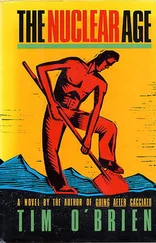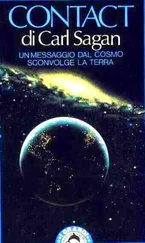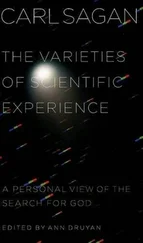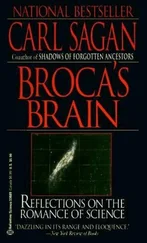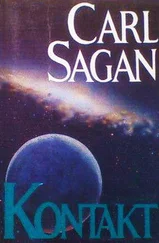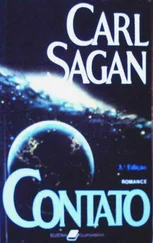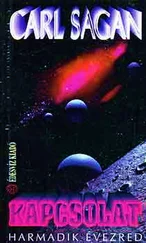Carl Sagan
THE NUCLEAR WINTER
The World After Nuclear War
Except for fools and madmen, everyone knows that nuclear war would he an unprecedented human catastrophe. A more or less typical strategic warhead has a yield of 2 megatons, the explosive equivalent of 2 million tons of TNT. But 2 million tons of TNT is about the same as all the bombs exploded in World War II—a single bomb with the explosive power of the entire Second World War but compressed into a few seconds of time and an area 30 or 40 miles across…
In a 2-megaton explosion over a fairly large city, buildings would be vaporized, people reduced to atoms and shadows, outlying structures blown down like matchsticks and raging fires ignited. And if the bomb were exploded on the ground, an enormous crater, like those that can be seen through a telescope on the surface of the Moon, would be all that remained where midtown once had been. There are now more than 50,000 nuclear weapons, more than 13,000 megatons of yield, deployed in the arsenals of the United States and the Soviet Union—enough to obliterate a million Hiroshimas.
But there are fewer than 3000 cities on the Earth with populations of 100,000 or more. You cannot find anything like a million Hiroshimas to obliterate. Prime military and industrial targets that are far from cities are comparatively rare. Thus, there are vastly more nuclear weapons than are needed for any plausible deterrence of a potential adversary.
Nobody knows, of course, how many megatons would be exploded in a real nuclear war. There are some who think that a nuclear war can be “contained,” bottled up before it runs away to involve much of the world’s arsenals. But a number of detailed analyses, war games run by the U.S. Department of Defense, and official Soviet pronouncements all indicate that this containment may be too much to hope for: Once the bombs begin exploding, communications failures, disorganization, fear, the necessity of making in minutes decisions affecting the fates of millions, and the immense psychological burden of knowing that your own loved ones may already have been destroyed are likely to result in a nuclear paroxysm.
Many investigations, including a number of studies for the U.S. government, envision the explosion of 5,000 to 10,000 megatons—the detonation of tens of thousands of nuclear weapons that now sit quietly, inconspicuously, in missile silos, submarines and long-range bombers, faithful servants awaiting orders.
The World Health Organization, in a recent detailed study chaired by Sune K. Bergstrom (the 1982 Nobel laureate in physiology and medicine), concludes that 1.1 billion people would be killed outright in such a nuclear war, mainly in the United States, the Soviet Union, Europe, China and Japan. An additional 1.1 billion people would suffer serious injuries and radiation sickness, for which medical help would be unavailable. It thus seems possible that more than 2 billion people—almost half of all the humans on Earth—would be destroyed in the immediate aftermath of a global thermonuclear war. This would represent by far the greatest disaster in the history of the human species and, with no other adverse effects, would probably be enough to reduce at least the Northern Hemisphere to a state of prolonged agony and barbarism. Unfortunately, the real situation would be much worse. In technical studies of the consequences of nuclear weapons explosions, there has been a dangerous tendency to underestimate the results. This is partly due to a tradition of conservatism which generally works well in science but which is of more dubious applicability when the lives of billions of people are at stake. In the Bravo test of March 1, 1954, a 15-megaton thermonuclear bomb was exploded on Bikini Atoll. It had about double the yield expected, and there was an unanticipated last-minute shift in the wind direction. As a result, deadly radioactive fallout came down on Rongelap in the Marshall Islands, more than 200 kilometers away. Most all the children on Rongelap subsequently developed thyroid nodules and lesions, and other longterm medical problems, due to the radioactive fallout.
Likewise, in 1973, it was discovered that high-yield airbursts will chemically burn the nitrogen in the upper air, converting it into oxides of nitrogen; these, in turn, combine with and destroy the protective ozone in the Earth’s stratosphere. The surface of the Earth is shielded from deadly solar ultraviolet radiation by a layer of ozone so tenuous that, were it brought down to sea level, it would be only 3 millimeters thick. Partial destruction of this ozone layer can have serious consequences for the biology of the entire planet.
These discoveries, and others like them, were made by chance. They were largely unexpected. And now another consequence—by far the most dire—has been uncovered, again more or less by accident.
The U.S. Mariner 9 spacecraft, the first vehicle to orbit another planet, arrived at Mars in late 1971. The planet was enveloped in a global dust storm. As the fine particles slowly fell out, we were able to measure temperature changes in the atmosphere and on the surface. Soon it became clear what had happened.
The dust, lofted by high winds off the desert into the upper Martian atmosphere, had absorbed the incoming sunlight and prevented much of it from reaching the ground. Heated by the sunlight, the dust warmed the adjacent air. But the surface, enveloped in partial darkness, became much chillier than usual. Months later, after the dust fell out of the atmosphere, the upper air cooled and the surface warmed, both returning to their normal conditions. We were able to calculate accurately, from how much dust there was in the atmosphere, how cool the Martian surface ought to have been.
Afterwards, I and my colleagues, James B. Pollack and Brian Toon of NASA’s Ames Research Center, were eager to apply these insights to the Earth. In a volcanic explosion, dust aerosols are lofted into the high atmosphere. We calculated by how much the Earth’s global temperature should decline after a major volcanic explosion and found that our results (generally a fraction of a degree) were in good accord with actual measurements. Joining forces with Richard Turco, who has studied the effects of nuclear weapons for many years, we then began to turn our attention to the climatic effects of nuclear war. [1] The scientific paper, “Global Atmospheric Consequences of Nuclear War,” was written by R. P. Turco, O. B. Toon, T. P. Ackerman, J. B. Pollack and Carl Sagan. From the last names of the authors, this work is generally referred to as “TTAPS”.
We knew that nuclear explosions, particularly groundbursts, would lift an enormous quantity of fine soil particles into the atmosphere (more than 100,000 tons of fine dust for every megaton exploded in a surface burst). Our work was further spurred by Paul Crutzen of the Max Planck Institute for Chemistry in Mainz, West Germany, and by John Birks of the University of Colorado, who pointed out that huge quantities of smoke would be generated in the burning of cities and forests following a nuclear war.
Groundburst—at hardened missile silos, for example—generate fine dust. Airbursts—over cities and unhardened military installations—make fires and therefore smoke. The amount of dust and soot generated depends on the conduct of the war, the yields of the weapons employed and the ratio of groundbursts to airbursts. So we ran computer models for several dozen different nuclear war scenarios. Our baseline case, as in many other studies, was a 5000-megaton war with only a modest fraction of the yield (20 percent) expended on urban or industrial targets. Our job, for each case, was to follow the dust and smoke generated, see how much sunlight was absorbed and by how much the temperatures changed, figure out how the particles spread in longitude and latitude, and calculate how long before it all fell out in the air back onto the surface. Since the radioactivity would be attached to these same fine particles, our calculations also revealed the extent and timing of the subsequent radioactive fallout.
Читать дальше

